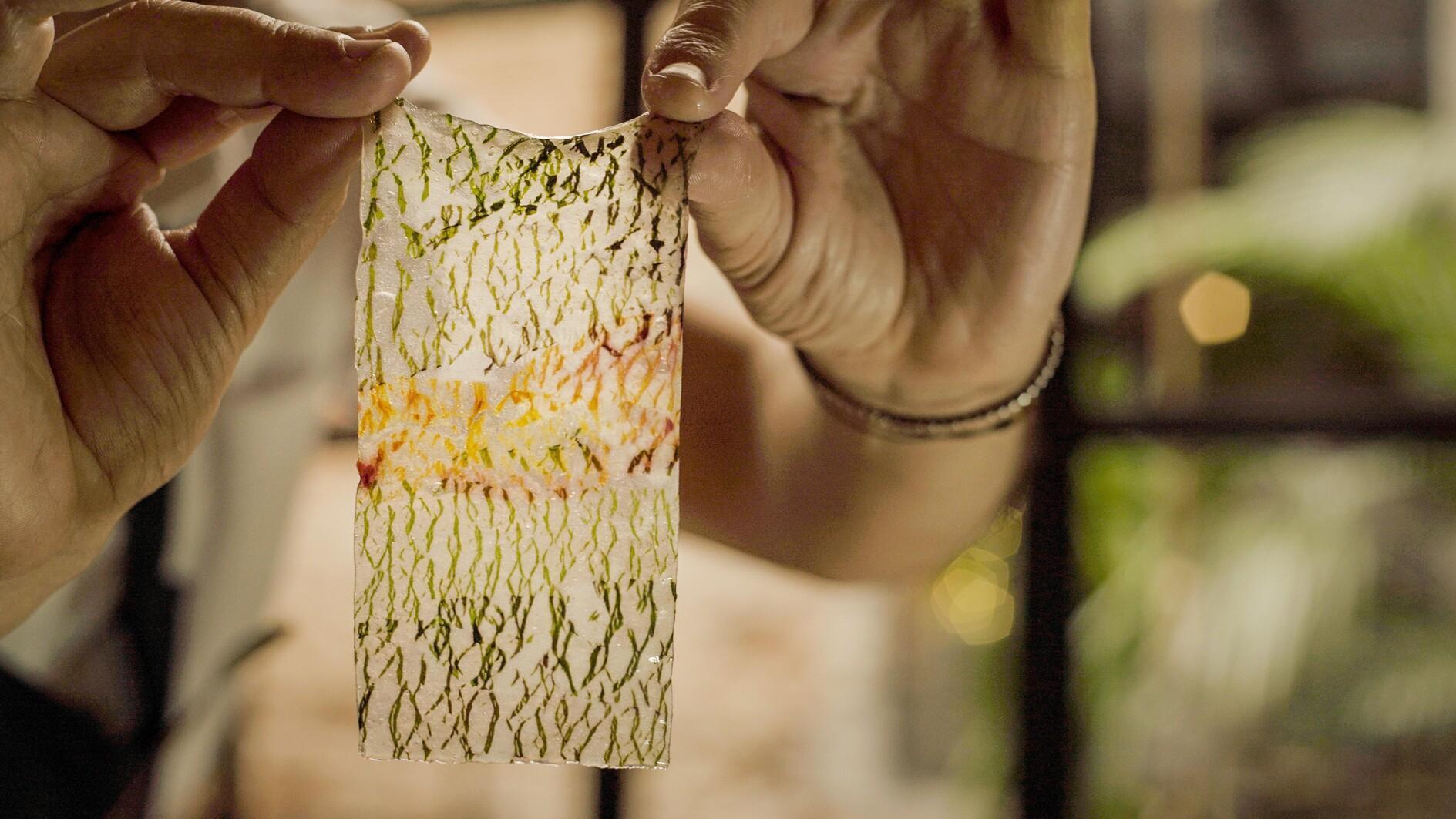
When I attended Madrid Fusión last January, I had the chance to dine at Diego Guerrero’s DSTAgE. Diego is one of those chefs whose vision only becomes more admirable the more you get to know him. Now, let me tell you about our evening at DSTAgE.
Similar to how the French excel in classical techniques and the Japanese are renowned for their precision with ingredients, it’s undeniable that Spanish chefs — particularly the Basques — are unparalleled when it comes to pushing the boundaries of creativity. This is the kind of creativity that transforms your perception of ingredients, rooted in a deep understanding of their essence rather than simple memorization. Diego Guerrero stands out as one of the best examples of this approach.
I first met him two years ago through Gökmen Sözen at a dinner he prepared in Bodrum. After that unforgettable and still vivid experience, I had a conversation with him, during which I asked how he defined his style. He responded, “My dishes are unique. We always take the side roads, never the main ones. When we begin working with a product, we likely discard the first ten ideas because they’re the obvious ones anyone could come up with. We focus on exploring the less obvious options. We’re not interested in what’s been done before. Breaking the rules lets us be more creative.”
After the dinner in Bodrum, I dedicated nearly an entire page of my newspaper article to describing the squid the chef prepared, as it truly captured his vision. None of us could have imagined that the fluffy dish before us was squid. Through the denaturation of collagen, a structural protein found in living organisms — essentially altering its shape and changing its physical and chemical properties — something remarkable had been created. I concluded my article with this line: “Now I can’t wait even more to visit the chef’s two-star DSTAgE in Madrid...”
When I attended Madrid Fusión last January, I had the chance to dine at Diego’s DSTAgE with Gökmen Sözen, who is a close friend of his. From what I’ve observed through Gökmen, Diego is one of those chefs whose vision only becomes more admirable the more you get to know him. Now, let me tell you about our evening at DSTAgE.
The ambiance of this place is casual and laid-back, which is surprising for a two Michelin-star restaurant. The tables are without tablecloths, and instead, a tablecloth is displayed on the wall as part of an installation by an artist. The objects and writings adorning the wall reveal a hint of the chef’s hidden rock and-roll spirit. The open kitchen design adds an interactive element to the dining experience.
Let’s talk about some of the things I tried that night. Sea candy served on seaweed is a dish that was born from the surpluses of smoked eel that they had in the restaurant, creating a garum with its skins, and then making candy with it and accompanying it with a Royal of monkfish and kombu seaweed. One of my favorite dishes featured squid, just like in Bodrum. Once again, the squid was prepared in such a way that you wouldn’t have guessed it was squid. The squid on the “Broken eggs plate,” which resembled an egg with a burst yolk, was prepared like this: Once the squid had been preserved for 24 hours in a liquid brine, they process it until they get a paste of its protein and cook it at low temperature in a very thin sheet. As I was spooning this dish, I was reminded of the description of the Trompe-l’ œil effect in one of the articles I had read about the chef. In other words, dishes that create an illusion...
In the dough of pizza, they use the basic ingredients of a pizza as a common thread but apply different techniques to the usual ones. They infuse wheat koji, texture and inoculate with camemberti penicillin. They let it ferment and the mushroom develops and finish with tomato sauce, basil, parmesan whey and oregano. The dish served with sauce filled in the croissant-shaped hollow part, accompanied by crispy seaweed, was based on zero waste to be able to take advantage of the croissants of the previous day. Through an enzyme known as amylase, they digest all the sugars of the croissant until they obtain a liquid that they reduce and turn into molasses. It’s the soul of the croissant that they accompany with algae and creme fraiche.
One of the most interesting things offered to me was “Smell of the ground.” They distill moss and wet earth to obtain the aromas of this known as petricor or geosmina. They impregnate different types of leaves with this aroma and form a sheet that they spread in a sap made with more petricor and inulin. Not to forget the wine pairing with all these dishes that elevate the food. I would also like to thank Mario Montes, the 2nd sommelier who dealt with us. At the end of the night, while having a conversation with the chef, I asked him what I was most curious about: How do you feed your inspiration? Doesn’t it finish at one point?
“There are multiple sources of inspiration that we have been studying over the years until we realize that if we want to do something different we have to change the way we look at food to try to escape from the most common creative levers such as memory, tradition etc... this leads us to observe the product in its chemical and biological composition and see what techniques we are able to apply,” told Diego. To sit at a chef’s table with great excitement every time. Diego is one of the few chefs who can give me this feeling.